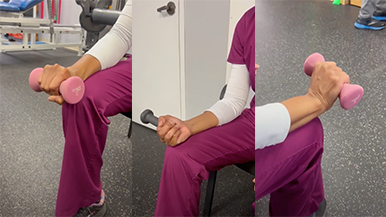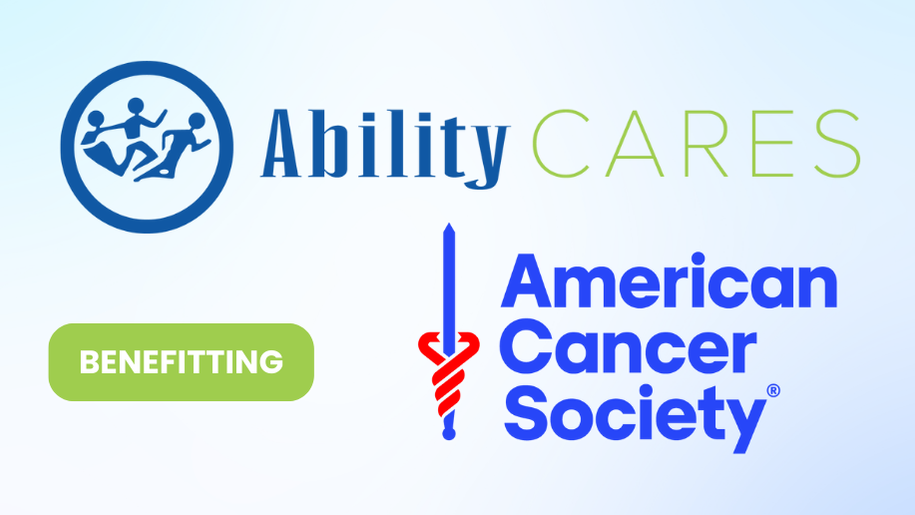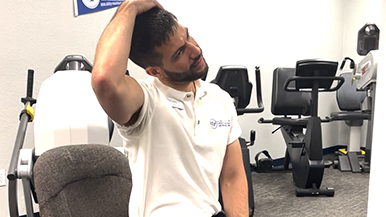Urinary incontinence is a condition where there is leakage of urine at inappropriate times, due to loss of control of the bladder.
 The bones of the pelvis include the hip bones, the pubic bone (at the front of the hips) and the spine and sacrum (located at the back of the hips). The muscles which are attached to the pelvic bones are called pelvic floor muscles. These muscles act like a sling in between the bones which help support the bladder and other organs. It also includes the sphincter muscle, which gives us conscious control over our bladder and bowels.
The bones of the pelvis include the hip bones, the pubic bone (at the front of the hips) and the spine and sacrum (located at the back of the hips). The muscles which are attached to the pelvic bones are called pelvic floor muscles. These muscles act like a sling in between the bones which help support the bladder and other organs. It also includes the sphincter muscle, which gives us conscious control over our bladder and bowels.
When these muscles weaken, the internal organs are not fully supported and controlling the release of urine becomes difficult and incontinence may occur.
There are four different types of urinary incontinence:
- Stress incontinence: When small amounts of urine leak when there is increased pressure on the bladder. The muscles aren’t able to maintain support of the bladder, usually because of lack of coordination, decreased strength or decrease endurance.
- Urge incontinence: When your bladder muscle goes into spasm, and, depending on the severity of spasms, medium to large amounts of urine may leak. There is a strong urge to urinate and when the urge isn’t able to be controlled, leakage occurs.
- Mixed incontinence: When you have both stress and urge incontinence.
- Functional incontinence: When urine leaks from not going to the restroom in time.
Not only can this condition interfere with daily activities, it’s also embarrassing. It’s important for you to know, you are not alone. According to the National Institute of Diabetes and Digestive and Kidney Diseases, more than 13 million US citizens have incontinence.
Who is Affected by Urinary Incontinence?
Bladder incontinence can affect anyone, but becomes more common with age. Women are more likely than men to have urinary incontinence, but men can have it as well. Generally males experience incontinence after having prostate surgery, or when they are in their 50’s or older. Female athletes in their teens, prenatal or postpartum women may also experience incontinence. For women, there are a number of possible causes of bladder incontinence.
The most common possible causes of female incontinence include:
- Pregnancy
- Childbirth
- Menopause
Other possible causes include:
- Side effects of certain medications
- Chronic constipation
- Caffeine and alcohol
- Infection
- Nerve damage
- Excess weight
Fortunately there are numerous ways female incontinence can be treated. Behavior modifications, physical therapy, exercises, lifestyle changes and medicines are typically tried first, before trying other treatments such as medical devices or surgery.
What Are Behavior Modifications?
Behavioral therapy, also called behavior modifications, is a form of treatment to help replace undesirable behaviors with more desirable ones. Behavior therapy includes a variety of cognitive, behavioral and operant techniques used to help the patient replace “bad” habits, with good ones.
What Is Bladder Retraining?
Bladder training is an important form of behavior therapy which can be used to treat urinary incontinence. The goal of bladder retraining is to help you gain more control over your bladder.
Bladder retraining can help in the following ways:
- Increase the amount of urine your bladder can hold
- Lengthen the amount of time between bathroom trips
- Improve your control over the urge to urinate
What Are The Methods Of Bladder Training?
Before starting any of the methods of the bladder retraining, your doctor may ask you to keep a journal of your urine bathroom habits. In this journal you’ll write specific details regarding your bathroom habits, such as when you have the urge to use the restroom or when you may have minor leaks of urine.
Methods of bladder retraining include:
Kegel exercises
Kegel exercises help strengthen the muscle used to stop the flow of urine. The exercise involves pulling, or “squeezing” your pelvic muscles (as if you’re trying to stop urine flow). Squeeze for about 10 seconds, then rest for 10 seconds. Do sets of 10 to 20 contractions per day.
Delayed urination
This method involves trying to hold your urine for five minutes every time you feel an urge to urinate. When you are able to wait five minutes after an urge easily, then you can increase the time to 10 minutes. Over time, this delay can increase and help build a tolerance to the urgency.
Scheduled bathroom trips
Use your restroom journal to determine how often you use the restroom. Once you have an amount of time, add 15 minutes to that time. Use the restroom at each scheduled visit, regardless of whether you actually feel the urge to go. Gradually increase the amount of time between bathroom breaks. This methods helps lengthen the time between restroom breaks.
Bladder retraining can take up to three to 12 weeks to notice results. The doctor will review your journal entries to see if the bladder training is helping and from there decide how to continue treatment.
Bladder training may not work for every patient. It may be necessary to work with a physical therapist in order to strengthen and control the pelvic muscles.
What Are The Results Of Bladder Retraining?
The results of bladder retraining will vary depending on the patient and the doctor’s bladder retraining method of choice. The degree of success will depend heavily on the patient and their compliance to the methods and techniques of bladder retraining. Studies have shown the cure rate of bladder retraining for incontinence was 75 percent after six months. Doctors may use bladder retraining because it is a simple, yet effective, way of managing urinary incontinence.
How Can Physical Therapy Help Female Incontinence?
Since each patient with incontinence is unique, the physical therapist will first perform an internal and external exam of the pelvic and pelvic floor muscles.
The goal of physical therapist treatment is to help you:
- Gain control over your incontinence symptoms
- Reduce the need for special incontinence undergarments, incontinence medications and possibly surgery
- Teach you to discover the right pelvic muscles and how to use them correctly
- Help you strengthen your muscles (through exercise) to better control your bladder
Your physical therapist may also:
- Teach you diet and nutrition to avoid food and drinks that may irritate the bladder
- Encourage and motivate you to change behaviors (through behavior modifications) which may worsen the symptoms
Doctors may use physical therapy as a treatment plan for incontinence because pelvic floor physical therapy is nonsurgical, noninvasive and has an 80 percent success rate in treating pelvic floor health problems.



